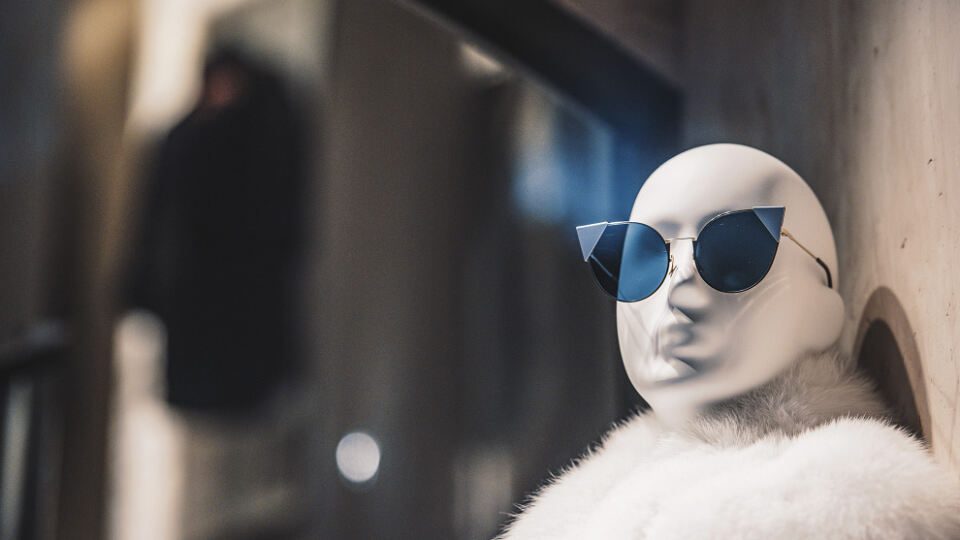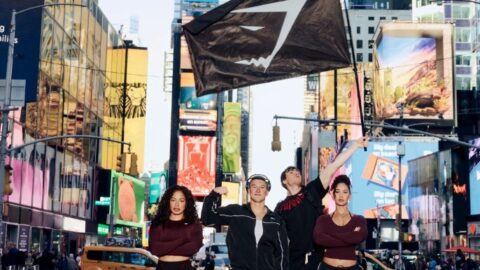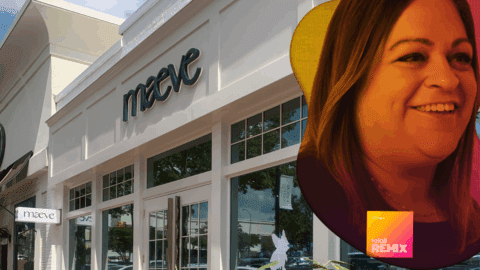Many luxury brands communicate their heritage and the promise of an elevated shopping experience via store design: traditional colors, subtle lighting and deep carpets that create a high-end hush. But what about when a luxury retailer wants to have a bit of playful fun? Pop-ups give such brands an opportunity to let their hair down — and they also can help create an immediate climate of exclusivity and social media excitement.
These benefits are just a few reasons why “luxury retailers are the ones that have embraced pop-ups the most” in recent years, according to Sterling Plenert, SVP at CallisonRTKL in an interview with Retail TouchPoints. For any type of retailer, pop-ups’ inherently temporary nature allow them to operate as “a laboratory for exploring new ideas,” Plenert added: “If it fails, it’s only there for three months, and then you go on to the next thing.”
Plenert discussed the happy convergence of luxury and pop-ups and shared his thoughts about which design trends are likely to remain strong in 2022.
Retail TouchPoints (RTP): What makes pop-ups a good fit for the luxury sector?
Sterling Plenert: Many luxury brands have been around for 100 or 150 years, so they have a very ‘locked-in’ brand DNA. When you walk into a store there’s carved wood paneling, recessed track lighting, carpeting — but in a pop-up they can do it completely differently, with blue flowers or waterfalls that align with the product. It can be a unique, engaging shopping experience that they can’t do in their main stores.
Additionally, because pop-ups are only there for a limited time — and I’ve seen them operate for as short as 24 hours — by their nature they immediately become exclusive and unique. Another of their best features is that they’re agile and allow retailers to try out new locations. Traditionally luxury brands had been pretty much limited to big cities, but with a pop-up you can, with a minimal investment, go to Boise, Idaho or the middle of Nebraska. Sometimes you don’t know what money is available until you put some expensive product out there. So retailers can use pop-ups to validate a location, try out a new concept or for the release of a new product. Essentially, it allows these brands to expand their customer base without a huge investment — and it’s a way for some more established brands to keep relevant and alive.
RTP: You’ve called pop-ups laboratories for experimentation. What are some of the most important metrics retailers should be gathering from their pop-up trials?
Plenert: Foot traffic and sales are the two most obvious, but retailers can drill down into those numbers to learn more about the type of person who visited the space. Are they first-timers unfamiliar with the brand, long-term brand loyalists or seekers of the new? A key data point is where people are in relationship to the brand, and it’s important to look at new customers gained or loyalists who become more interested in a brand’s latest iteration.
Retailers also need to look at social media: has the pop-up generated buzz? Is it a hot new space that influencers need to see? In the current retail environment a lot of pop-ups are experiential spaces made to order for Instagram photos — things like the Museum of Ice Cream or the interactive Van Gogh exhibits. A lot of luxury brands are competing for that visitor; after all, people used to view going to a high-end store as a day’s entertainment.
The most important thing, however, is the experience that the customers have. Customers reacting in real time to [a retailer’s] product or brand can be enlightening, especially for a brand coming from an online-only presence. They get vital feedback from these face-to-face interactions within a highly competitive retail world.
RTP: What are some of the most common challenges retailers face in establishing pop-ups of all types?
Plenert: There are technical challenges that vary depending on the type of location. Even if it’s a temporary structure it still needs to meet Americans with Disabilities Act requirements and sprinkler coverage. So if it’s in a mall, a pop-up can’t have a solid ceiling or you may have to add sprinklers. Another issue is permitting. Most municipalities don’t treat pop-ups differently than any other store location, so going through the permit process can take longer than the time the pop-up itself would be operating. And if the pop-up offers food or beverages, it must meet all local health codes.
Our advice is that if you’re taking over an empty storefront or some other mall space and you can do a design that transforms the space using vinyl wraps, loose fixturing and various types of visual merchandising, you can often create a pop-up without needing a new permit.
There’s a different set of challenges for brands that are using pop-ups to go from DTC to omnichannel. These brands often find it tough to scale for this environment in terms of things like training staff, wrapping up a product, maintaining inventory — things they hadn’t had to do when they were just selling online. It’s particularly important to train the staff; if the salesperson is non-attentive, rude or surly, that turns you off no matter how good the rest is.
RTP: How are innovations like CallisonRTKL’s Sidewalk Pod expanding pop-up possibilities?
Plenert: Development of the Sidewalk Pod was a reaction to COVID. A lot of municipalities in the U.S. and around the world allowed restaurants to take over part of their streetscape in order to enable brands to meet social distancing and airflow requirements while expanding opportunities to expand foot traffic and sellable areas.
A typical pop-up doesn’t change the mall [it’s housed in], but at least here in New York City, they have changed the urban environment by allowing pedestrians to take back the streets from automotive traffic. And as they become more important structures versus things just made out of shipping crates, they’re creating another layer of the city that hadn’t existed before. From just being operated by restaurants they’re expanding to having retail, bike parking and play spaces.
The Sidewalk Pod, which CallisonRTKL developed with the ASTOUND Group, is an adaptable kit of parts sized 8’ by 20’ — the size of a parking space. A lot of owner/operators don’t have the skill set, knowledge or funds to design and take over a space like this, so the Pod allows them to adapt to whatever they need. It provides an infrastructure that could have different claddings for, say, an Italian restaurant versus a lingerie store. Essentially it’s a much easier system for owner/operators to expand out into the street.
RTP: What are some retail design trends you think will be strong in 2022?
Plenert: We’re seeing, especially with luxury brands, a lot of customer-facing spaces that are exclusive, like VIP rooms or entire floors. Additionally, retailers selling, for example, sneakers or T-shirts are creating special rooms for customization processes, where the customers can interact with the sales staff or even designers. The retailers that I’ve seen doing well are doing things that make the customers feel special and offering things you can’t get in an online interaction.













